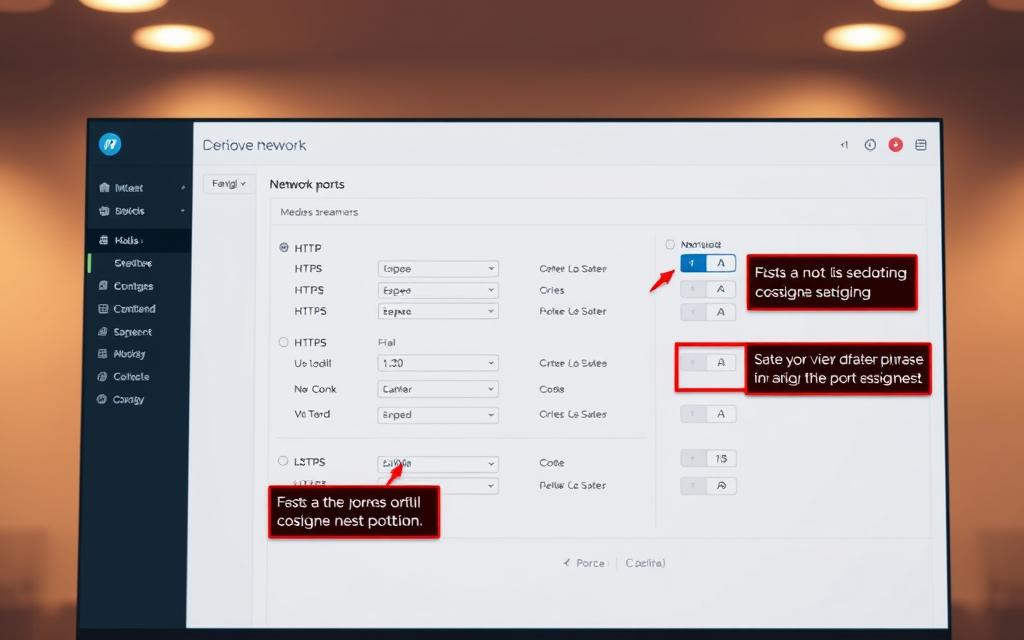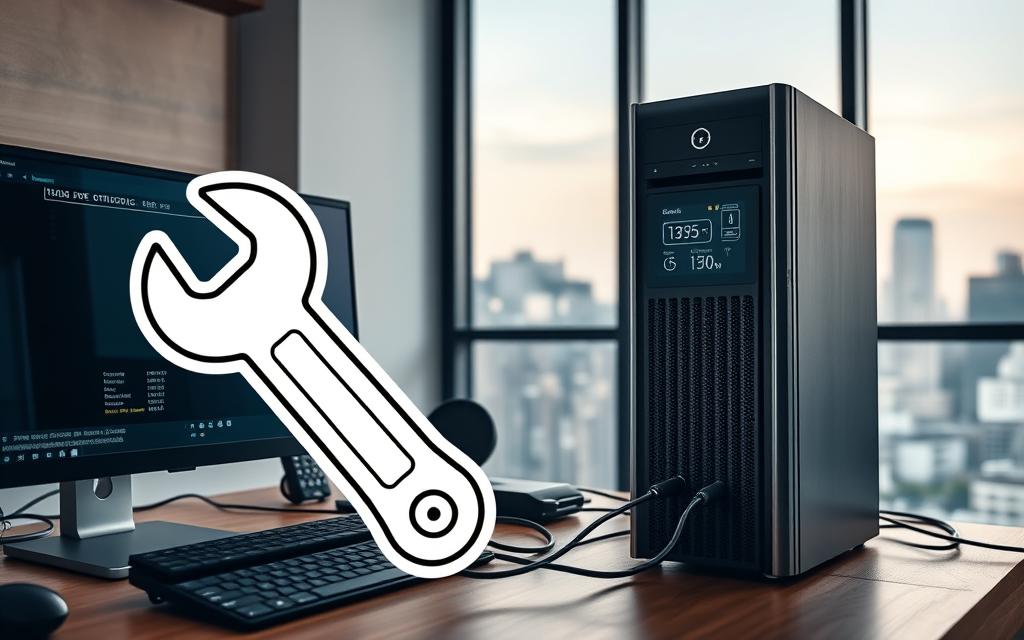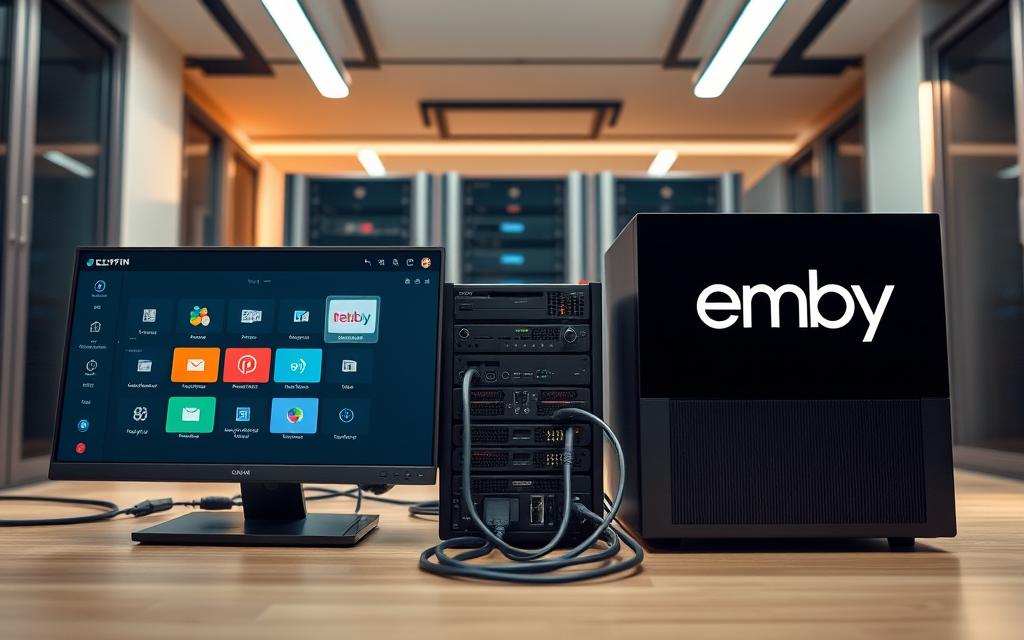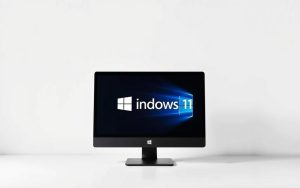Table of Contents
Many home users seek flexible media solutions by running multiple streaming platforms. Combining Jellyfin and Emby on a single server offers expanded features, but technical hurdles exist.
Docker simplifies deployment, yet conflicts arise. Port assignments, resource allocation, and network configurations require careful planning. A Debian-based setup with existing Emby services demands adjustments to avoid collisions.
This guide explores practical steps for seamless integration. Learn to resolve Docker errors, optimize hardware, and maintain security. Dual-server setups unlock media redundancy and broader client compatibility—even with Roku devices.
Understanding Jellyfin and Emby Compatibility
Combining Jellyfin and Emby unlocks unique media management possibilities. While both platforms stream content, their architectures differ significantly. Compatibility hinges on resolving these disparities.
Key Differences Between Jellyfin and Emby
Licensing is the most notable contrast. Emby restricts access to hardware transcoding and plugins behind a paywall. Jellyfin remains entirely open-source.
| Feature | Jellyfin | Emby |
|---|---|---|
| Cost | Free | Premium features require payment |
| Metadata Handling | Customizable scrapers | Pre-configured agents |
| Plugin Ecosystem | Community-driven | Official marketplace |
Hardware transcoding varies too. Emby supports GPU acceleration out-of-the-box, while Jellyfin needs manual setup. Both servers handle 4K streaming, but Emby’s paid tier optimizes it better.
Why Run Both Media Servers?
Dual setups allow A/B testing features without losing existing libraries. Emby’s Trakt integration syncs watch history, while Jellyfin offers deeper customization.
For Roku users, maintaining both ensures broader client support. Shared media folders simplify content access across platforms. Docker isolates instances, preventing conflicts.
Prerequisites for Running Jellyfin and Emby Together
Setting up dual media servers requires careful planning for smooth operation. Both platforms demand specific resources to handle transcoding and metadata management simultaneously. Proper configuration prevents conflicts while maintaining optimal performance.

Hardware and Software Requirements
For concurrent 1080p streams, allocate at least 8GB RAM and a quad-core CPU. Storage needs vary:
- 50GB minimum for metadata databases
- Additional space for media libraries
Debian Bookworm users must install:
- libssl3 for encrypted connections
- FFmpeg 5.1+ for hardware acceleration
Docker Compose v2.17+ ensures container isolation. Schedule regular backups for both server configurations.
Network and Port Considerations
The user’s Emby port modification to 8090/8091 demonstrates proper conflict avoidance. Follow this strategy:
- Assign Jellyfin to 8092-8096 range
- Configure router port forwarding for remote access
Firewall rules must allow:
- TCP 8090-8096 for web interfaces
- UDP 7359/1900 for device discovery
Shared media files need 775 permissions for cross-platform access. Calculate 15Mbps bandwidth per 4K stream when planning client capacity.
Step-by-Step Setup: Installing Jellyfin and Emby
A dual-server installation demands precision to prevent resource clashes. Proper sequencing ensures smooth operation—Emby first as the native application, followed by containerized Jellyfin. This approach minimizes dependency conflicts while maintaining system stability.
Installing Emby on Your Machine
Debian Bookworm users should begin with Emby’s .deb package. Download the latest build from the official repository, then install using sudo dpkg -i emby-server.deb. Resolve missing dependencies with apt-get install -f if prompted.
- Edit the service file: /usr/lib/systemd/system/emby-server.service
- Add Restart=always under [Service]
- Enable with systemctl enable emby-server
Create a dedicated emby user account for security isolation. Set ownership of media directories with chown -R emby:emby /path/to/media.
Deploying Jellyfin in a Docker Container
Docker simplifies Jellyfin deployment but requires correct network settings. Avoid the user’s port mapping error (8095:8094) by using this compose syntax:
version: ‘3’
services:
jellyfin:
ports:
– “8096:8096”
network_mode: bridge
Key considerations for stable operation:
- Mount config volumes to /config for persistence
- Use healthcheck directives to monitor container status
- Assign GPU devices for hardware acceleration when needed
Verify both services run simultaneously with docker ps and systemctl status emby-server. Shared media files require 775 permissions for cross-platform access.
Configuring Ports to Avoid Conflicts
Proper port configuration separates functional media servers from frustrating conflicts. The user’s 8095:8094 mapping error highlights a common Docker pitfall—incorrect network mode selection. Successful setups require distinct ports for each service.

Changing Default Ports in Emby
Emby simplifies port adjustments through its web dashboard. Navigate to Dashboard > Advanced > Networking to modify:
- HTTP port (default 8096 → 8090)
- HTTPS port (default 8920 → 8091)
For headless installations, edit /var/lib/emby/system.xml directly:
<PublicPort>8090</PublicPort>
<PublicHttpsPort>8091</PublicHttpsPort>
Assigning Unique Ports to Jellyfin
Docker requires precise port declarations to avoid “published ports discarded” errors. The correct syntax mirrors the user’s intended 8095 setup:
- Host port first: – “8095:8095”
- Container port second
- Avoid host network mode for isolation
Verify port availability before deployment:
sudo netstat -tulnp | grep 8095
nmap -p 8095 localhost
For home networks, consider reverse proxy consolidation. Nginx can route:
- emby.yourdomain.com → 8090
- jellyfin.yourdomain.com → 8095
Client devices need explicit port specifications. Roku users must append :8095 to server addresses. Clear browser cache when testing new ports.
Troubleshooting Common Issues
Technical hurdles often emerge when managing dual media platforms. Even after configuration changes, services may retain old settings—like Emby persistently using port 8096. Systematic diagnostics resolve these conflicts while maintaining server stability.

Eliminating Port Conflicts
When Emby ignores new port assignments, orphaned processes often cause this behavior. Terminate them decisively:
- Identify lingering processes: sudo lsof -i :8096
- Force termination: kill -9 [PID]
- Clear Docker cache: docker system prune -af
For firewall-level resolution, block the rogue port temporarily:
sudo ufw deny 8096/tcp
sudo ufw reload
Resolving Startup Collisions
Concurrent initialization often causes files locking and plugin interference. Implement these safeguards:
- Delay Jellyfin’s startup by 30 seconds in Docker Compose
- Disable Emby’s auto-update in /var/lib/emby/plugins/configurations
- Analyze logs with: journalctl -u emby-server –no-pager
Database locks between services require manual intervention. Stop both servers, then delete:
- /var/lib/emby/data/lockfile
- /config/jellyfin/data/library.db.lock
Client-side cache clearance ensures proper access after changes. Instruct users to:
- Hard refresh browsers (Ctrl+F5)
- Reconfigure Roku channels with updated ports
- Clear mobile app data if playback fails
Conclusion: Successfully Running Both Media Servers
Running dual media servers unlocks expanded functionality but requires strategic configuration. The user’s port customization demonstrates how distinct network settings enable seamless local access. Both platforms now deliver content without collisions.
For ongoing stability, monitor resource usage during peak streams. Schedule monthly security audits for exposed ports. Regular backups protect library databases and configuration files.
Home users benefit from testing features across both platforms. Roku devices gain broader compatibility, while shared folders simplify management. Future updates demand isolated testing before deployment.
Verify full accessibility by checking remote clients and transcoding performance. Community forums offer troubleshooting support for both server ecosystems. This dual setup balances flexibility with reliability.
FAQ
Can Jellyfin and Emby run simultaneously on the same device?
Yes, both media servers can operate on one machine if configured correctly. Each must use unique ports to avoid conflicts.
What are the main differences between Jellyfin and Emby?
Jellyfin is open-source and free, while Emby offers premium features with paid licensing. Both provide media streaming but differ in plugins and customization.
Why would someone use both Jellyfin and Emby together?
Users may prefer Jellyfin’s open-source model while still needing Emby’s advanced features, such as hardware transcoding or client app support.
What hardware requirements are needed to run both servers?
A multi-core CPU, 8GB+ RAM, and sufficient storage are recommended. Docker helps isolate resources if running Jellyfin in a container.
How do you prevent port conflicts between Jellyfin and Emby?
Assign different ports in each server’s settings—default ports like 8096 (Emby) and 8097 (Jellyfin) ensure smooth operation.
Can both servers access the same media library files?
Yes, pointing both Jellyfin and Emby to the same network storage or local folders allows shared access to media content.
What’s the best way to install both on a Windows PC?
Install Emby natively and run Jellyfin in Docker for better resource management. Adjust firewall rules to permit traffic for both.
How do you troubleshoot startup errors when running both?
Check logs for port conflicts, verify Docker configurations, and ensure plugins or dependencies don’t interfere with each server.









